HGA worked closely with key stakeholders from Marlboro Music and Marlboro College to design sustainable new rehearsal spaces and a music library in Vermont. The ensemble not only captivates with its simple beauty but also with its technological sophistication.
When you hear the name Marlboro, you probably think of the cigarette that has been one of the ten most valuable brands for decades – but which could be on the brink of extinction. According to reports, the US tobacco company Philip Morris is planning to withdraw from the traditional cigarette business.
Music lovers are sure to associate Marlboro with something completely different: the non-profit, multi-week summer music festival on the Potash Hill Campus in the foothills of Vermont’s Green Mountains. Every summer, you can attend outstanding concerts there for five weeks.
Marlboro Music: Egalitarian spirit
Since 1951, generations of the world’s most talented classical musicians have come together to take part in the „Marlboro Music School and Festival”. Aspiring and established musicians work together here without the pressure of a performance and give themselves a break from performance thinking. This led the magazine “The New Yorker” to call the Marlboro Music Campus “the most coveted retreat in the classical music world”.
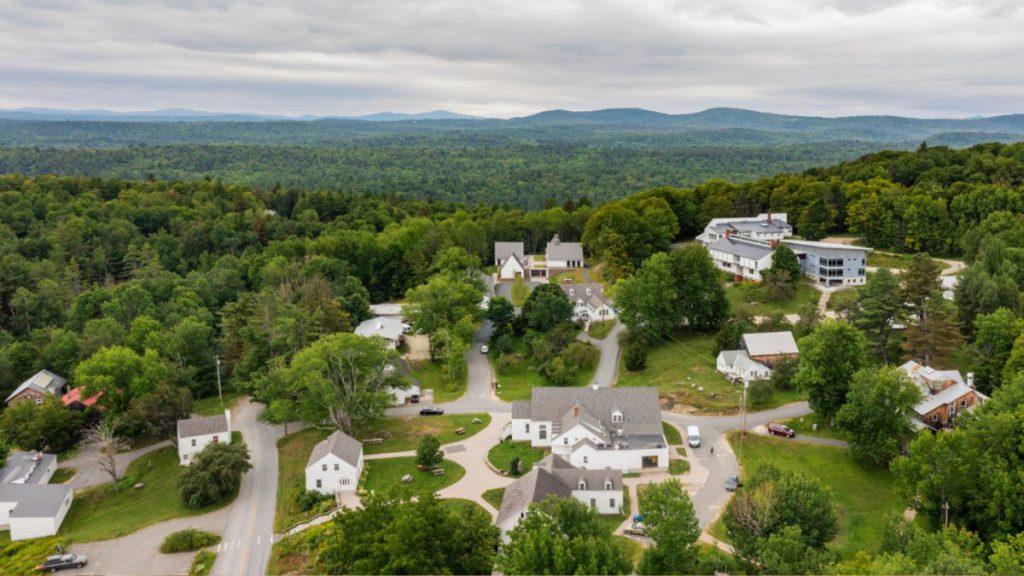
The annual Marlboro Music is currently directed by the two pianists Mitsuko Uchida and Richard Goodeand attracts greats such as cellist Yo-Yo Ma and violinist Joshua Bell.Over the years, however, the buildings on the campus no longer met the wishes and needs of musical requirements and archiving purposes in the best possible way.
Contemporary studios and library
The festival organizers therefore approached HGA with the brief to design contemporary rehearsal facilities as well as a modern music library plus administrative offices and common rooms. The musical environment must have been stimulating in any case, as the designs for the Jerome & Celia Bertin Reich Rehearsal Building & Music Library were promptly awarded several prizes, including the AIA Architecture Award 2023, the AIA Minnesota Honor Award and an Architizer A+ Jury Award.
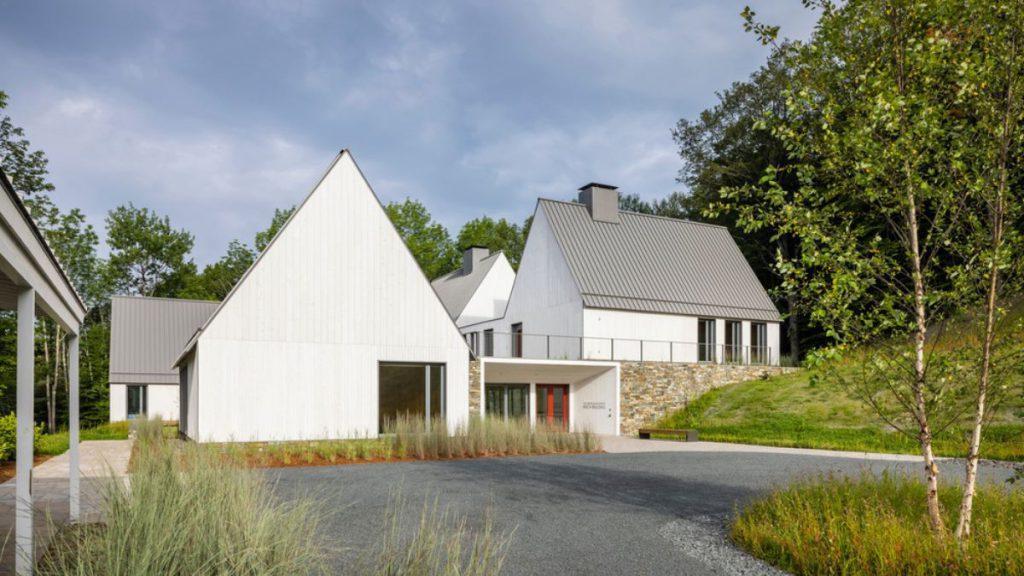
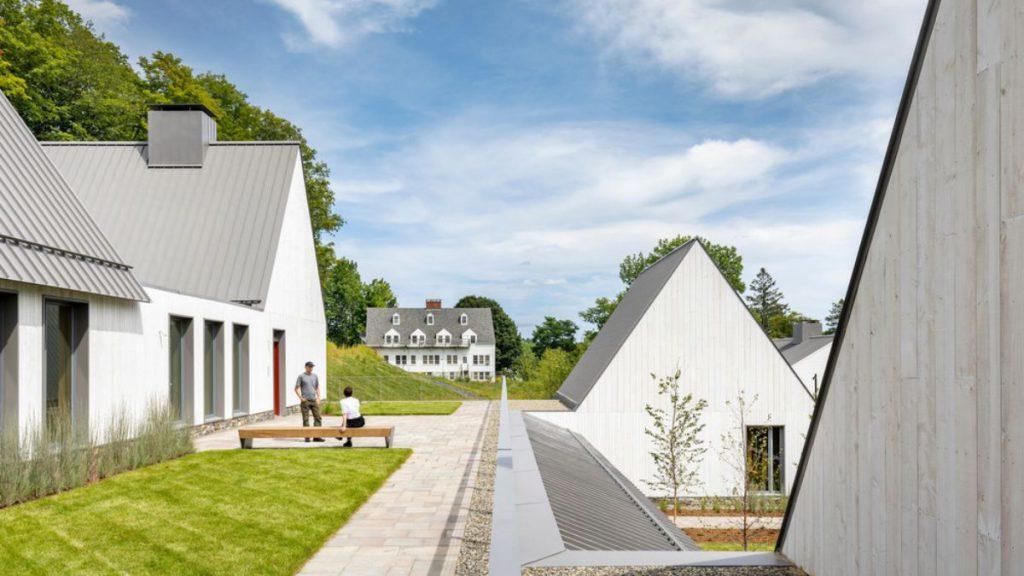
The renowned architecture and engineering firm HGA remained true to the spirit of Marlboro and the project reflects the simple, rural surroundings without any artificial frills.
“Repeat offender”
HGA is a “repeat offender” here: the office had previously realized five “cottages” for guest musicians and a student residence for the Marlboro Festival . Sustainability and the integration of the buildings into the surrounding landscape, forest and mountains were already a top priority back then. Naturally, musicians were also involved in the process from the outset.
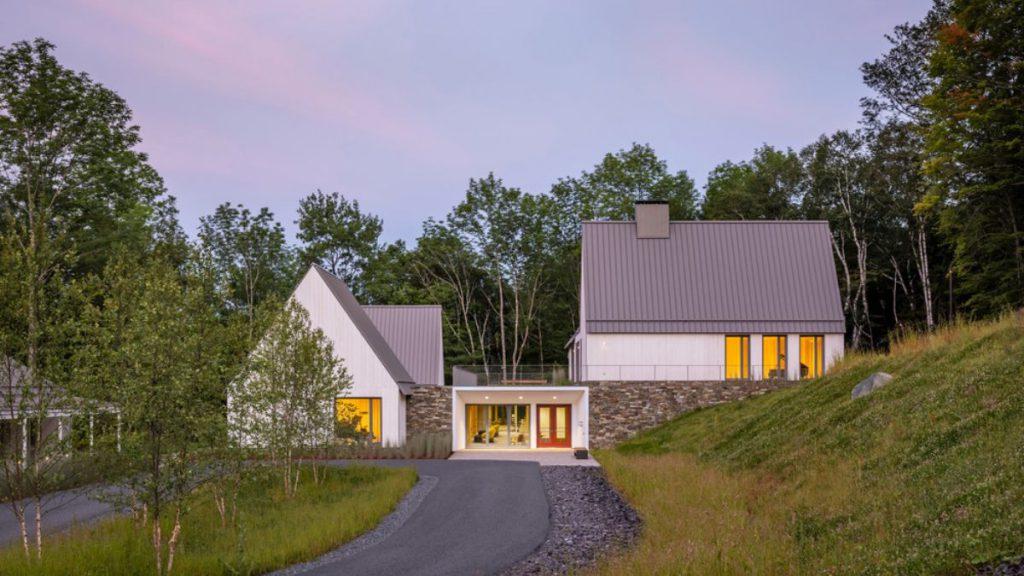
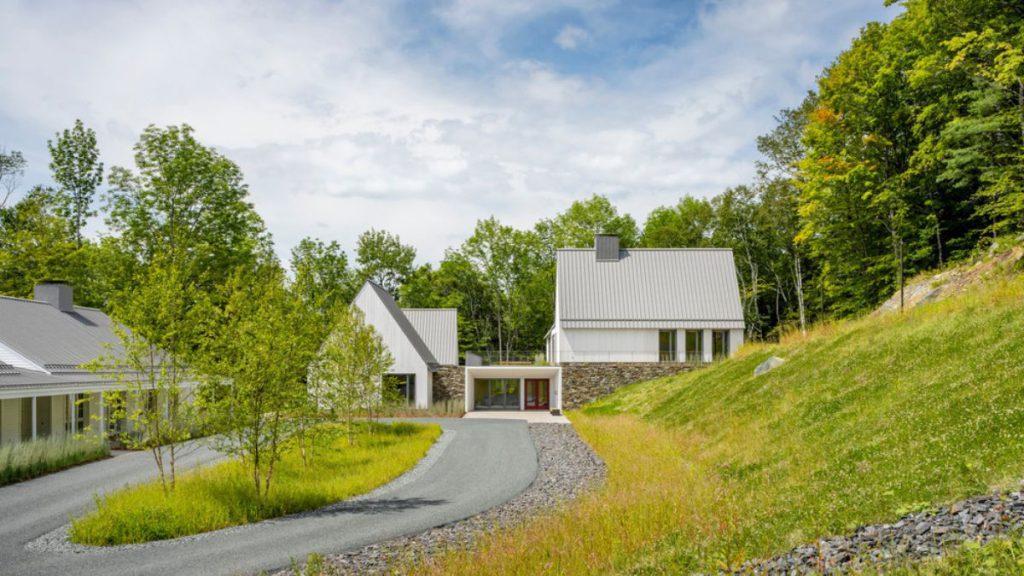
Today, as then, HGA’s aim from the outset was to fulfill Vermont’s ACT 250 criteria. This environmental protection regulation was issued back in 1970.
Inspired by the buildings of the Cape Cod peninsula
The design for the idyllic college campus was inspired by the farm buildings and cottages, the 400-year-old architectural style of Cape Cod. Cape Cod is a hook-shaped peninsula in the US state of Massachusetts, with picturesque villages, lighthouses, ponds and, of course, beaches facing the bay or the Atlantic Ocean. A Cape Cod house is a low, wide, one- or two-story frame building with a moderately steep pitched roof, a large central chimney and very little ornamentation.
And so the new Marlboro Music buildings have an aesthetically restrained, simple gable shape. The small footprint, the sloping roofs, the compact volumes and the local materials emphasize the embedding in the region with its lush hills and streams.
Harmoniously orchestrated ensemble of buildings
The new ensemble consists of three rehearsal rooms and the archive library, which are connected via meeting rooms and orchestrated around the central courtyard. This gives visitors and guests an experience of concentration and a relaxing atmosphere at the same time.
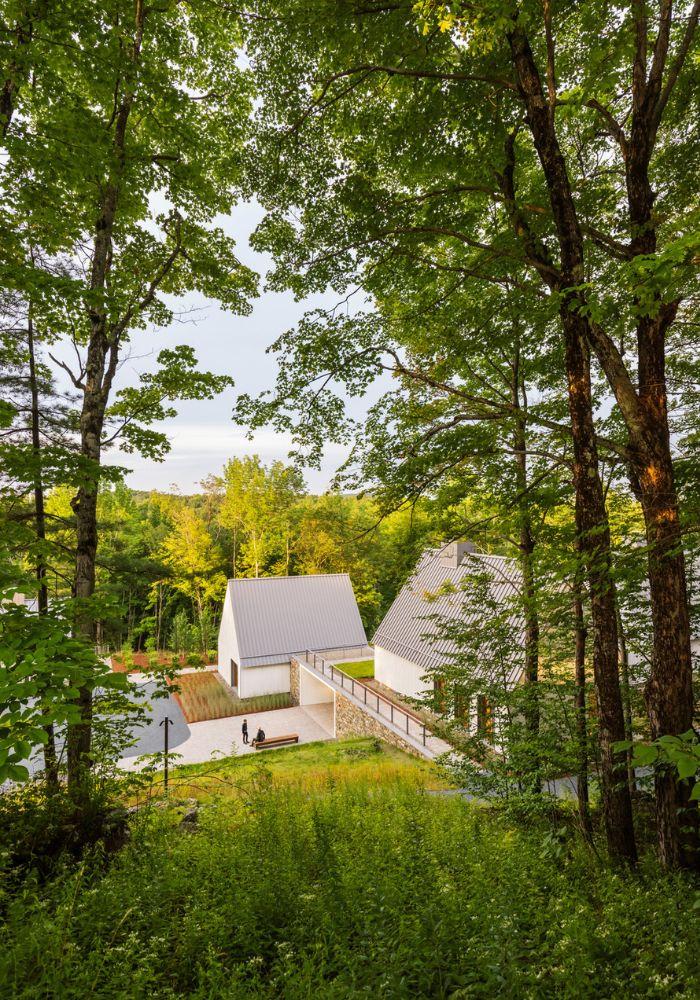
The modest ceiling heights of the lobby areas allow the full volume of the rehearsal rooms to come into its own. Each interior space was designed with dual use in mind: Rehearsals in the summer and classes, lectures and work meetings during the school year.
With the aim of protecting the surrounding area, the structure of the rehearsal rooms was integrated into the steeply sloping terrain on two levels. As a result, both levels, including the outdoor facilities, are fully accessible and the sustainability features have been perfectly implemented. Among other things, the building relies on geothermal energy, passive solar energy and green roofs with rainwater treatment, while the choice of materials inside promotes a healthy indoor climate.
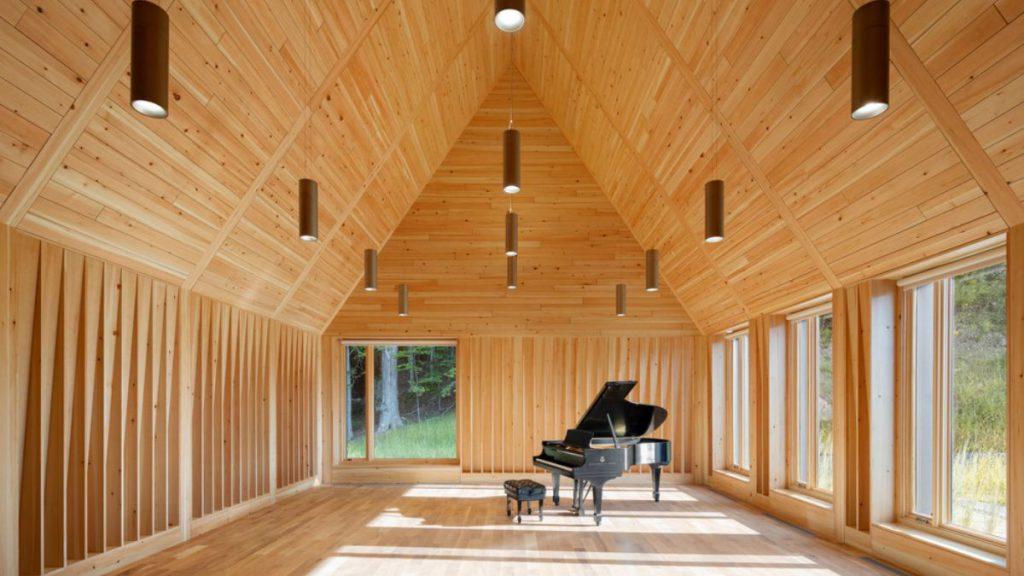
Nothing was changed on the original site with the surrounding woods – as if the new buildings had always stood on this spot. For the additional planting, care was taken to choose species that support pollinators.
Architecture celebrates the relationship between music and nature
The color palette gently brings the Vermont landscape into the home, with textures and colors inspired by local flora and fauna. Carefully placed windows enhance this harmonious connection with the surrounding landscape.
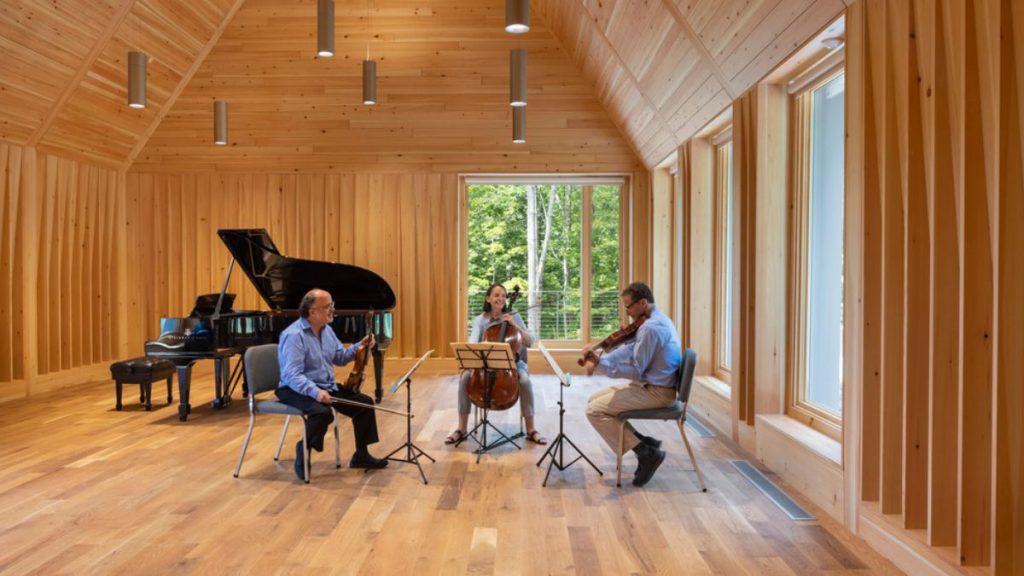
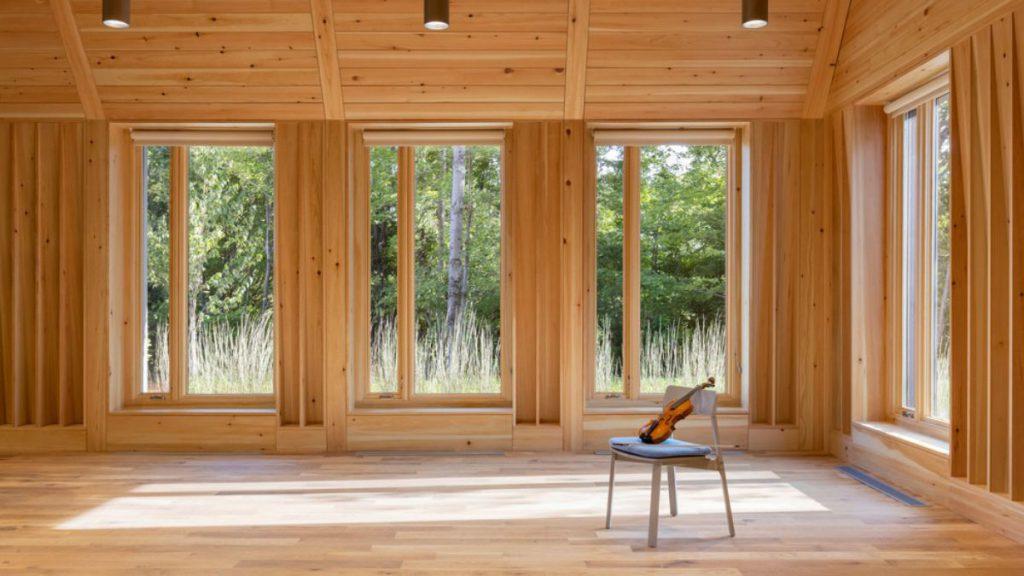
The ensemble has to withstand all seasons, including the cold and snowy winters in Vermont. And so durable, hard-wearing and low-maintenance materials were chosen, including standing seam metal roofs, heavy-duty snow guards and cedar cladding.
In good hands: Valuable music collection
A central feature of Marlboro’s philosophy is that musicians and their families can work and play together. They can gather in the courtyard for events, parties or simply informal meetings.
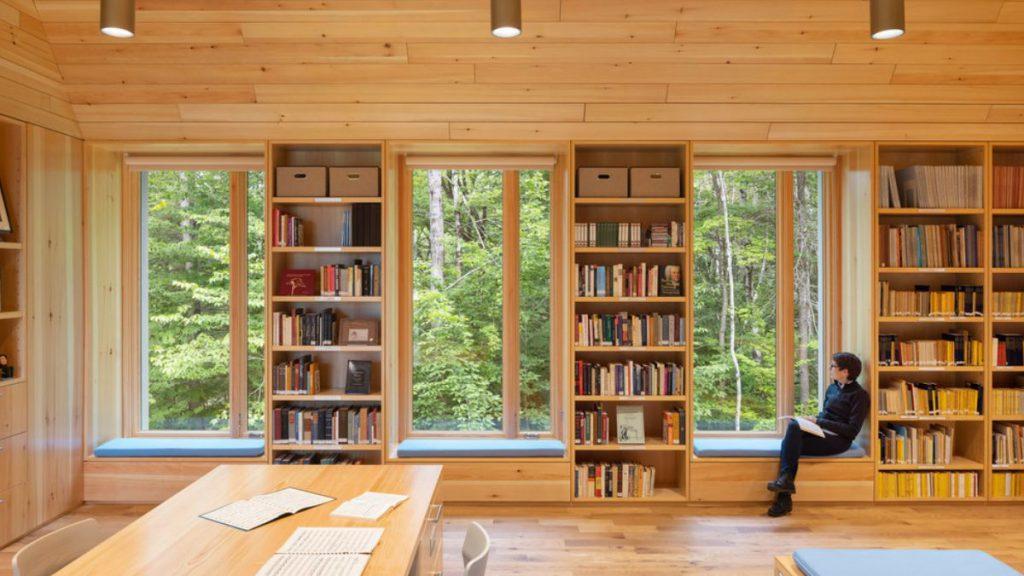
Marlboro is home to one of the world’s largest collections of chamber music: more than 10,000 scores can be found there. The library must ensure that these works are properly archived. Climate control, fire protection, lighting and security are crucial for the preservation of this valuable asset.
The library also offers space for studying and browsing. The new Maxine and Stuart Frankel Foundation Library therefore includes archive rooms, seminar rooms and flexible work areas for library staff.
Low-tech appearance with high-tech interior
Despite the low-tech appearance of the new Marlboro Music building, there is a sophisticated concept behind the scenes. The technical equipment is discreetly integrated and concealed in the “Reich Hall”. It includes LED lighting, modules for passive solar energy generation and the green roof, which can be used as an outdoor terrace for events.
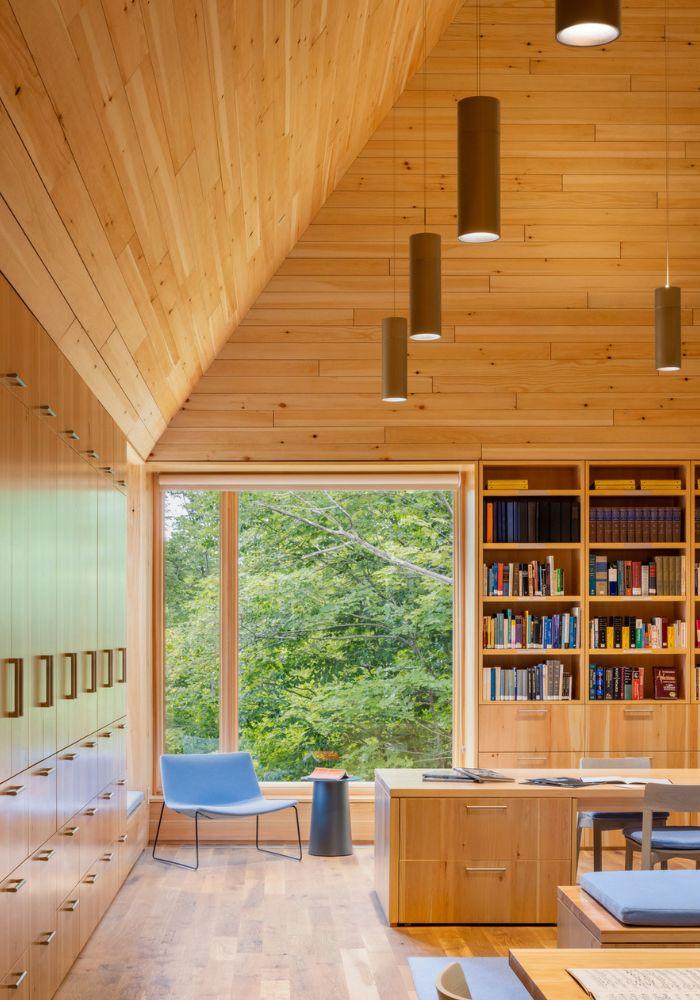
Other sustainability features include operable windows for natural light, ventilation and heat control, as well as an energy-efficient geothermal ground source heat field that supplies water-to-water heat pumps. These units provide both cold and hot water as needed for the underfloor heating and fan coil system. All in all, the sustainable elements enhance the building’s environmental and human-friendly features.
Keeping light pollution low
The minimal lighting of the ensemble keeps light pollution to a minimum. This allows visitors to enjoy the breathtakingly dark sky at night in this rural setting.
HGA is a 70-year-old interdisciplinary design firm, a collective of over 1,000 architects, engineers, interior designers, planners, researchers and strategists. Its mission is to create a positive, lasting impact for clients and communities through research-based, holistic solutions.
“Great design requires a sense of curiosity as a basis for deep insights into customers’ needs, their contexts and the human condition in general,” is one of HGA’s guiding principles.
Text: Linda Benkö
Fotos: Albert Vecerka/Esto; v2com


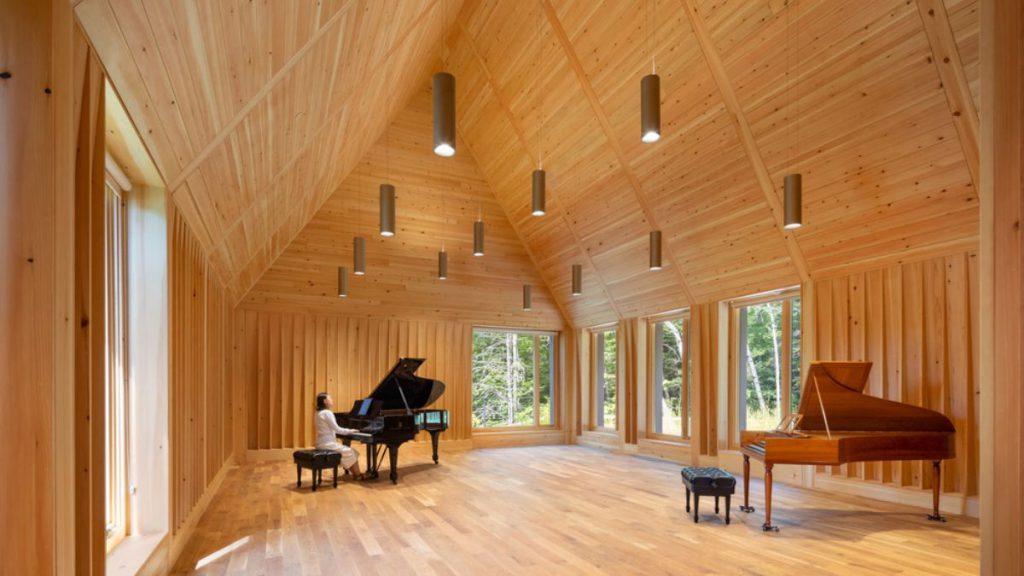
iThere are no comments
Add yours